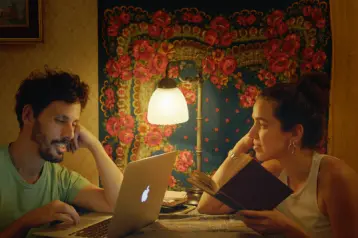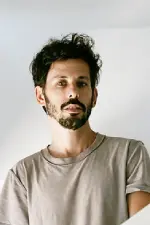

Original name:Adentro Mío Estoy Bailando
English name: The Klezmer Project
Year: 2023
Run time: 115 Min
Language: Spanish, Yiddish, Ukrainian, Romanian, English, German
Type (Colour/ Black & white): Colour
Country: Austria, Argentina
Director: Leandro Koch, Paloma Schachmann
Producers: Andrew Sala, Lukas Rinner, Sebastián Muro, Leandro Koch, Paloma Schachmann
Cast: Leandro Koch, Paloma Schachmann, Perla Sneh, Rebeca Ianover, César Lerner, Marcelo Moguilevsky, Lukas Rinner, Vanya Lemen, Ivan Popovych
Screenplay: Leandro Koch, Paloma Schachmann
Cinematographer: Leandro Koch, Roman Kasseroller
Editor: Leandro Koch, Javier Favot
Sound Designer: Nahuel Palenque
Music Composer: Traditional Klezmer Music
Production Company: Nabis Filmgroup Gmbh, Nevada Cine Srl
World Sales: Films Boutique

Leandro Koch is an Argentinean Writer and Director. He studied Film at the Universidad del Cine, and was part of the Film Program at Universidad Di Tella. He wrote and directed two short films, Yet Some Day (2020) and Visible Island (2019).

Paloma Schachmann is an Argentinean Musician, Filmmaker and Researcher, specialized in klezmer music. She plays in several bands including Oido Obsoleto, Blau, and in the ceremonies of the Amijai Synagogue. Since 2018 she directs Klezmer Culture, a project for the diffusion of klezmer in Latin America.
Argentinian cameraman Leandro makes a living from filming Jewish weddings. At one of his jobs, he falls in love with Paloma, the clarinettist of the Klezmer band. To seduce her he pretends to be shooting a documentary film about traditional Yiddish folk music. What Leandro does not know is that his “fake” film project will take him on an unscripted journey throughout Eastern Europe in search of the last remaining Klezmer melodies.
Their wanderings through Ukraine, Romania, and Moldavia are mostly fruitless, with the Jewish presence limited to old photos and painful memories. What they do discover is that many local folk musicians still incorporate elements of the klezmer tradition in their repertoire.
Koch and Schachmann intertwine their personal journey with a folktale about two lovers who defy Jewish traditions, and music historian Rob Cohen explains why after the Second World War the language of the klezmer tradition—Yiddish—gave way to Hebrew